Column: ‘Enough is enough.’ Why RV encampments might finally start disappearing in L.A.
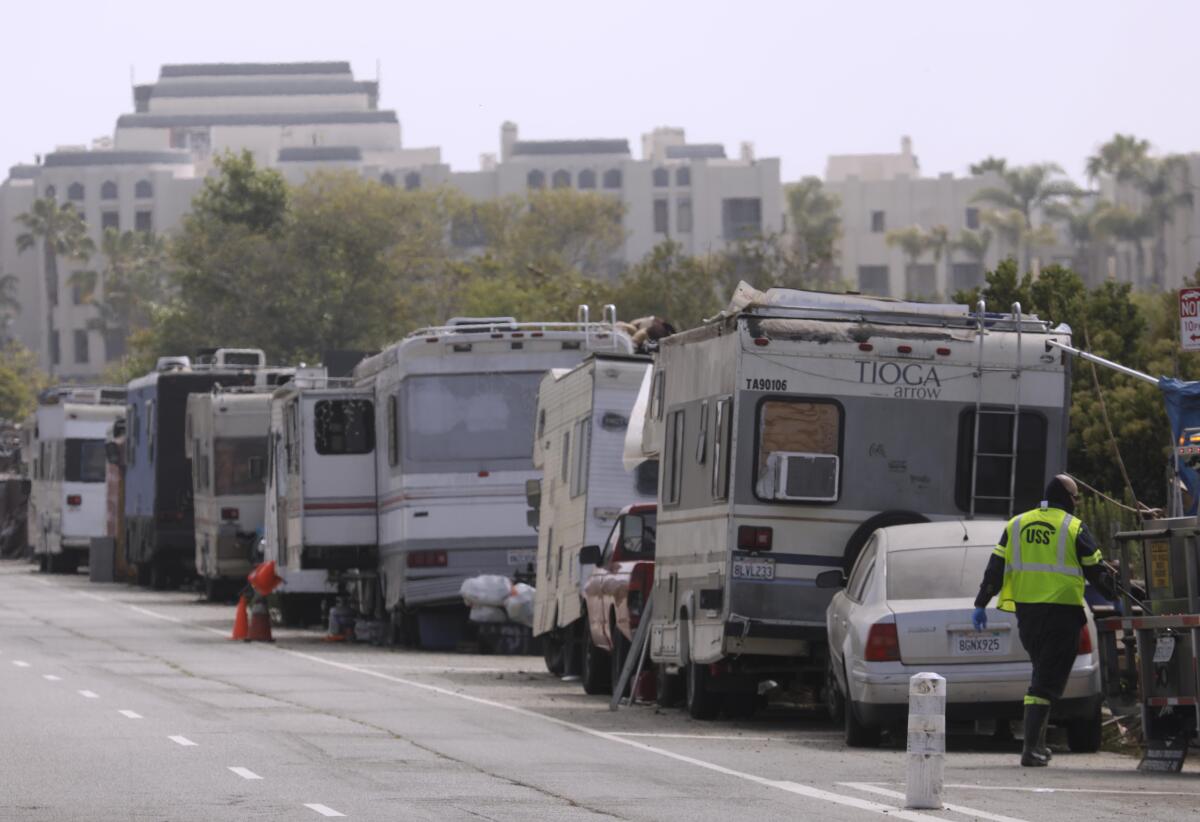
- Share via
For almost three years, “home” for Wendy Lockett was a dilapidated RV.
Her “community” was a close-knit group of men, women and dogs living in equally dilapidated RVs, and her “neighborhood” — much to the aggravation of many on the Westside of L.A. — was a trash-strewn encampment on Jefferson Boulevard alongside the Ballona Wetlands.
I used to see Lockett every now and then — usually after some tragedy, like the fire in February that killed her good friend Woody Akiedis. “He was very diplomatic,” I remember her telling me wistfully, standing next to the burned-out husk of his RV.
Then, one morning this summer, it was Lockett’s “home” that went up in flames.
She wasn’t there. “She had a rodent infestation,” explained Scott Culbertson, executive director of the Friends of Ballona Wetlands. “So she went to stay with a friend.”
I haven’t seen Lockett since, and there’s a good chance I never will again.
The very same morning that her RV caught fire, an army of workers cleared much of the encampment in the name of the Jefferson Trail Rehabilitation Project. They towed vehicles, coaxed encampment residents into hotels and left behind concrete barricades, metal fencing and gigantic “no parking” signs.
Lockett’s “community” is now gone. And with it, the likelihood that she’ll be able to find another dilapidated RV to rent or use as a “home” and park it in her “neighborhood,” as she has done for others.
A growing encampment has left significant damage in the freshwater marsh. But that’s no reason not to be sensitive to the needs of homeless people.
“We’ve got to be willing to stand up and say enough is enough,” said L.A. City Councilmember Traci Park, who ran on a promise to get rid of RVs. “The missing ingredients have been the will to get it done. And the willingness to say when something has become a problem, like we saw at Ballona Wetlands, where you’ve got extensive environmental damage being caused by ongoing public safety issues.”
To be sure, this is just one encampment. But what’s happening on the Westside is worth watching because, for better or worse, it’s likely to be the model that both city and county officials will use to address a type of homelessness that has quickly become an entrenched crisis — one that’s largely of L.A.’s own making.
Consider that, back in 2019, the number of people countywide who were living in cars, vans but mostly RVs was about 10,000, according to data compiled by the Los Angeles Homeless Services Authority. Now, it’s about 14,000.
Why the increase?
Broadly speaking, it’s the fault of officials at all levels of government. They listened to NIMBYs and didn’t build enough housing to meet the need, leading to astronomical rental prices that have pushed the poorest and most vulnerable among us onto the streets.
But here is where the story of good intentions and unintended consequences begins.
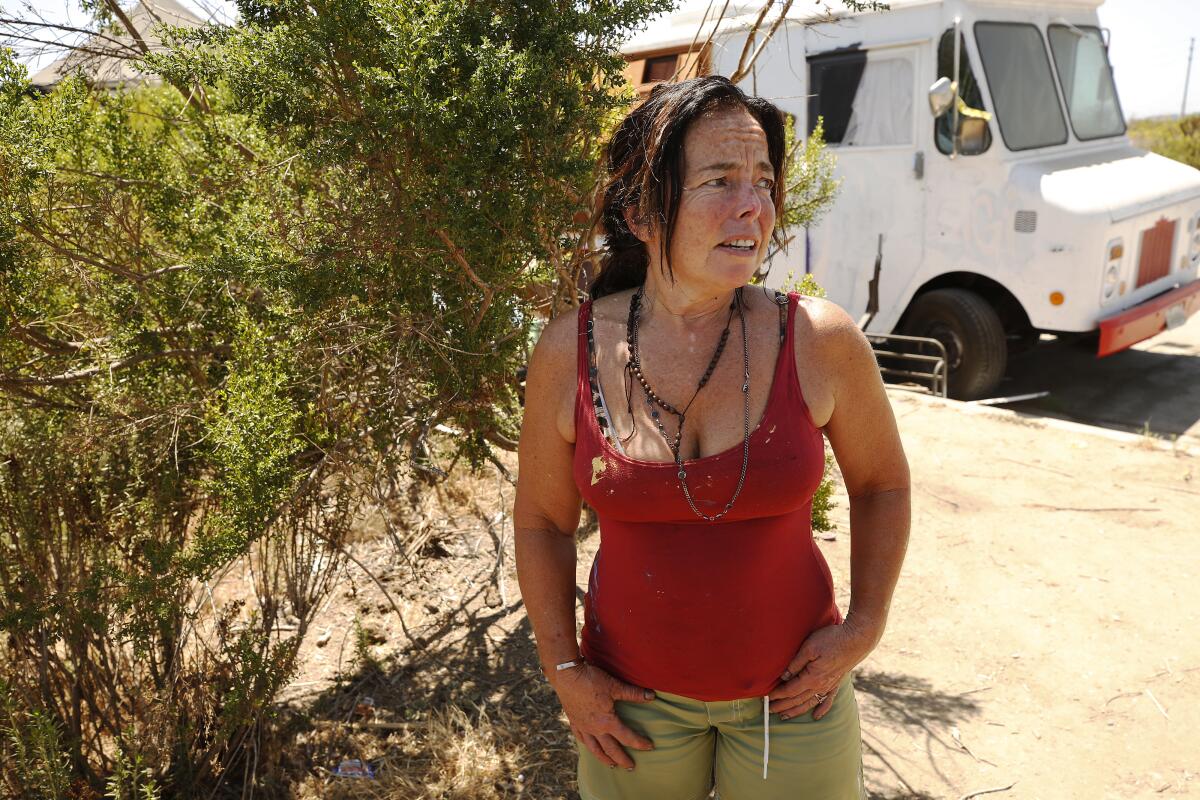
More narrowly, the increase can be traced to the pandemic-era decision, made by city officials in January 2021, not to tow vehicles being used as homes, lest we expose more people to COVID-19. Not that there was much towing going on anyway in 2020. Which is why, by the time I met Lockett on a hot afternoon in June 2021, weeds were growing around the tires of her RV.
It took another year for the Los Angeles City Council to feel it was safe enough to reverse that decision on towing, and only after receiving a slew of complaints about fires, piles of trash, human waste and needles.
City officials say they are responding to growing concern about landlords who rent RVs and vans to unhoused residents.
The plan was to prioritize removing RVs that were unregistered, inoperable and dangerous. But a lack of heavy-duty tow trucks and cheap places to store oversize vehicles prompted numerous delays. So many delays, in fact, that L.A. got a mostly new council and new mayor while we waited.
“We have not resolved the RV issue yet,” Mayor Karen Bass told me in March. “But we absolutely will.”
In the meantime, a sense of permanency has pervaded many encampments. And why not?
At the Ballona Wetlands, it led to the creation of a community, of which Lockett called herself the “sheriff.” Longtime neighbors looked out for one another, and grieved and laughed with one another. Such bonds are important, especially on the streets. And yet, the stronger their community got, the more it seemed to reinforce what advocates say is a common belief among RV dwellers: that they aren’t really homeless and, therefore, don’t need a hotel room, making the job of outreach workers even harder.
The de facto permanency also had the unintended effect of creating a booming market for so-called vanlords — people who lease RVs for a few hundred bucks a month, sometimes full of mold, without running water or working toilets, and park them, confident that they won’t be towed.
“It speaks to the desperation,” said Va Lecia Adams Kellum, chief executive of LAHSA. “That people are literally paying rent to be in a dilapidated RV just shows you the level of despair and need for us to build affordable housing.”
Indeed, these days, even people with full-time jobs live in RVs because that’s all they can afford.
Exactly how big this market is and who the main vanlord players are remain something of a mystery, though LAHSA is trying to figure it out.
The City Council recently voted to draft an ordinance that would crack down on the renting of RVs, particularly dilapidated ones parked on public streets. More money, including from the state, also has been set aside for vehicular homelessness intervention.
Adams Kellum calls this “momentum.” But don’t expect actual speed in unraveling the many unintended consequences that enabled the spread of RV encampments all across Los Angeles.
There aren’t enough trucks to tow or space to park large vehicles. But those issues pale in comparison to changing the mindset of many who live in RVs.
The only model that seems to work requires months of planning, and the cooperation of multiple government and nonprofit agencies. Outreach workers, law enforcement, sanitation, towing companies, bus drivers and even representatives from the California Department of Motor Vehicles must be present for each operation.
And even with all that, few who leave their RVs will do so knowing for certain when they’ll be able to move from a temporary hotel room into permanent housing. It’s still very much a leap of faith in a system that, so far, has failed far more people than it has helped.
“We now realize it’s more complicated than just someone is in a vehicle,” Adams Kellum said.
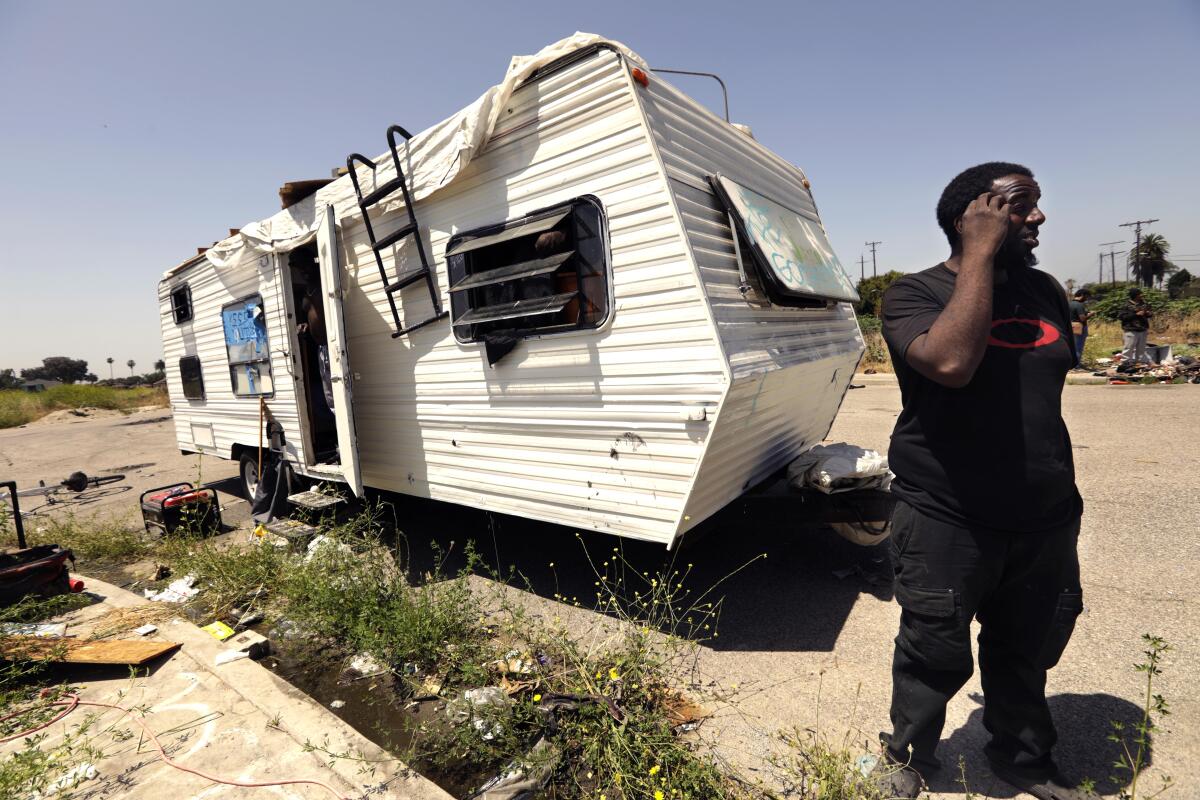
“Complicated” is a word that a lot of people use when they talk about RV encampments, including Los Angeles County Supervisor Holly Mitchell — and understandably so.
A year ago, she and fellow Supervisor Kathryn Barger helped launch a Pathway Home pilot program to gather more information about the thousands of people living in vehicles in the unincorporated county and design a model to persuade them to come indoors.
The plan was to rank each encampment based on its risk to public safety, and then going about removing them, sending 1,500 people into temporary and then permanent housing and dismantling hundreds of inoperable RVs in the process.
All of which seems simple and straightforward enough, right?
Wrong.
It took the county until last month to conduct its first major operation at an RV encampment — in unincorporated East Gardena near West Rancho Dominguez — because, you guessed it, it’s complicated.
Taking people off the street and into tents is a new twist on homeless shelter being explored by the San Francisco-based Urban Alchemy in two tent villages operating in Los Angeles and Culver City.
“We’d been working on this for quite some time, putting the infrastructure in place, developing our processes,” Mitchell explained. “It is different — very different — from asking someone living in a tent or in a sleeping bag on the street, will you come inside? They can roll up their stuff and take it with them. To store or to destroy an RV takes a whole ‘nother level of engagement.”
The DMV, for example, had to do some investigating to figure out who owned the RVs being rented at the encampment, so that they could be legally towed. And while that was happening, Mitchell said, her office was trying to persuade nearby business owners to store some of the vehicles on their properties.
Park described a similarly complicated situation at the Ballona Wetlands.
Planning to remove the RV encampment started back in March, not long after Lockett’s friend Akiedis burned to death, surrounded by his collection of Hot Wheels toy cars.
There was extensive outreach, mostly handled by LAHSA, to gauge how many of the residents would be willing to move indoors. When the time came in late July and August, some who were renting from vanlords didn’t have the keys to their RVs. Others managed to get their vehicles running and just drove off. Still others went to hotels.
“We have known all along that this was going to be a particularly challenging population,” Park said. “And we knew already that there were some folks out there that were going to be service resistant.”
But the RVs there are gone, unlike in East Gardena, where the county has been able to tow only about 30 vehicles and get 58 people into temporary housing. To be fair, the encampment is vast, with hundreds of vehicles draped in tarps and leaking unknown liquids in the mostly industrial corridor.
As one unhoused resident told an ABC7 reporter: “It gets tiring... You’re always getting robbed. Everything is always getting stolen.”
The need among those living in such dire conditions — men, women, even young children — is immense. And it has been ignored for far too long while officials have been building a model to solve a problem they unintentionally created.
Mitchell, whose district includes East Gardena, blames neighboring cities for pushing RV dwellers into the unincorporated county — a sentiment echoed by Ruth Sanchez of the Dolores Huerta Foundation in the Antelope Valley.
For years, Sanchez has been providing food, toiletries and emotional support to RV dwellers who tell harrowing tales of being forced out of Lancaster and Palmdale, and onto a mix of private and public property in the remote high desert.
A new plan by Councilman Joe Buscaino probably won’t work. But even the most liberal of Angelenos seem fed up with homeless people living everywhere.
It’s a desolate life, marked by extreme temperatures, abject poverty, frequent illness and early death.
“Water is gold out here,” Sanchez explained when I joined her on her rounds at one encampment. “See, in L.A., there’s a gas station in every corner so they can go, they can get gas [for generators] or water. Here, the nearest one is ... walking distance about a half-hour.”
But what’s most striking is how few housed people seem to care. Out in the middle of nowhere, there are no neighbors on the next block to complain about piles of trash or human waste and demand that government take action.
Supervisor Barger’s office, whose district includes the Antelope Valley, told me they are aware of the encampments and are working on a model to solve the problem. But, you know, it’s complicated.
Even Adams Kellum seemed at a loss.
“It’s worrisome for any group that is in a desert with a lack of resources ... and it’s a space that doesn’t have adequate interim housing or adequate permanent housing, and in their case, adequate services overall,” she told me.”That level of vulnerability is profound.”
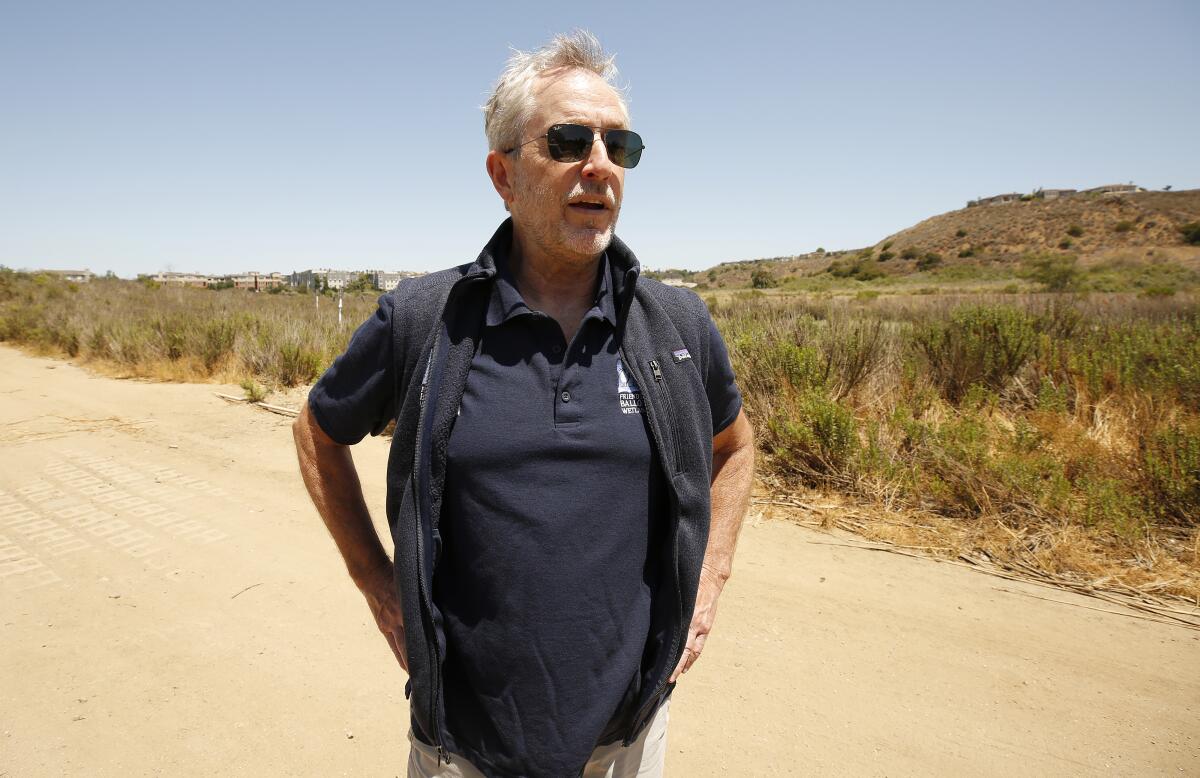
Looking back, Culbertson doesn’t know quite what to make of the last three years.
As executive director of Friends of Ballona Wetlands, he was one of the loudest voices warning about the potentially irrevocable environmental damage being done to the ecological reserve and, specifically, to the freshwater marsh on Jefferson Boulevard.
“There was no part of the freshwater marsh that didn’t take a hit,” he told me.
The fires. The trash. The human waste. The felled trees. The puddles of oil and gasoline. The needles that are still being found.
Resources are being marshaled to help those who made the expensive pilgrimage to the playa. It’s another reminder who really matters and who doesn’t.
But there were also the many people he met who were in desperate need of help. Wendy Lockett. Woody Akiedis. Stephen Gilbert, a nature lover like Culbertson who was thrilled to learn his RV was parked next to one of the best birdwatching spots in all of L.A.
“It’s going to take the city decades to get out of the homelessness crisis,” Culbertson said sadly. “It didn’t happen overnight. It’s not going away overnight.”
In the meantime, volunteers with Friends of the Ballona Wetlands are tilling the soil and preparing to put in scores of new trees and plants to help with the environmental restoration. The concrete barricades and metal fencing should be gone by January.
“We’re going to get the marsh reopened for students and families and nature lovers and birdwatchers so that they can come back and enjoy the place again,” Culbertson said. “Let’s hope that the city can find a way to deal with this homelessness crisis because it’s frightening for everyone. Frightening for the folks who have to experience it.”
- Share via
Watch L.A. Times Today at 7 p.m. on Spectrum News 1 on Channel 1 or live stream on the Spectrum News App. Palos Verdes Peninsula and Orange County viewers can watch on Cox Systems on channel 99.
More to Read
Sign up for Essential California
The most important California stories and recommendations in your inbox every morning.
You may occasionally receive promotional content from the Los Angeles Times.

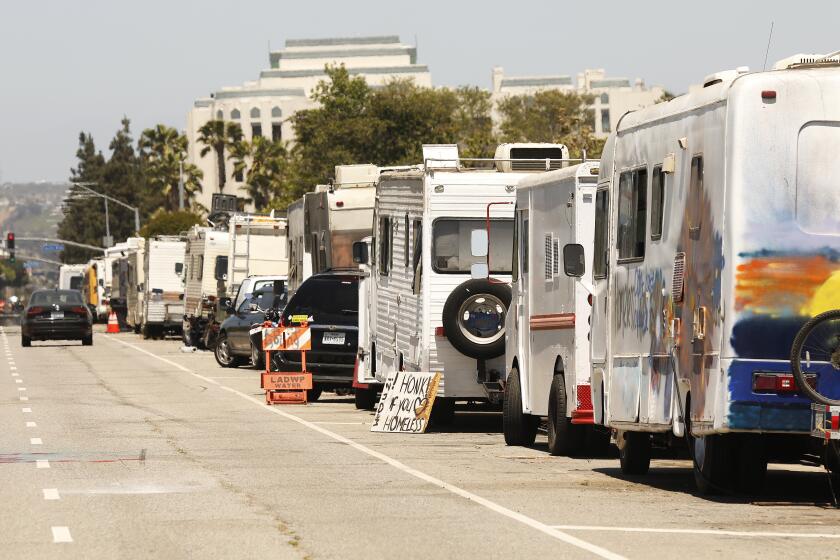
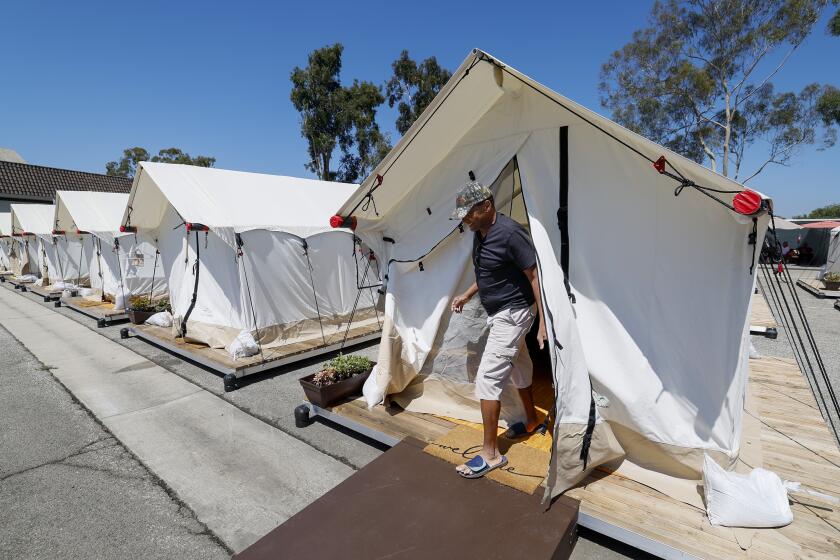
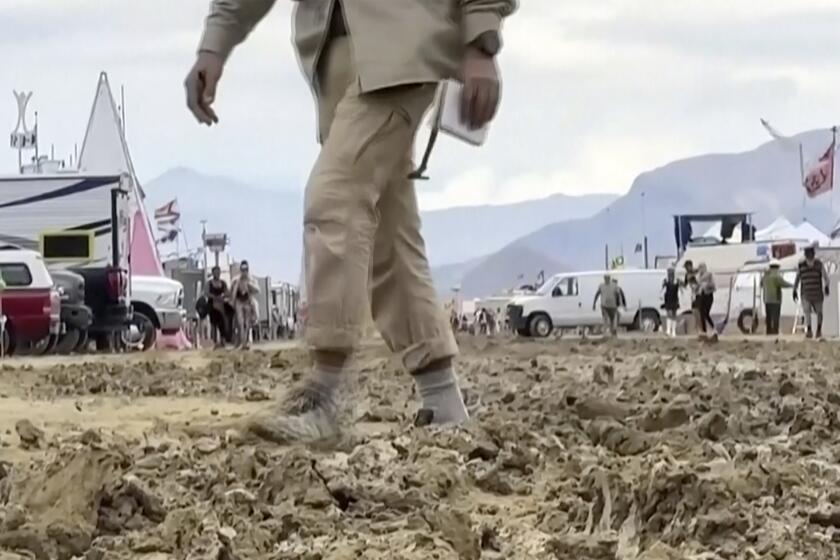
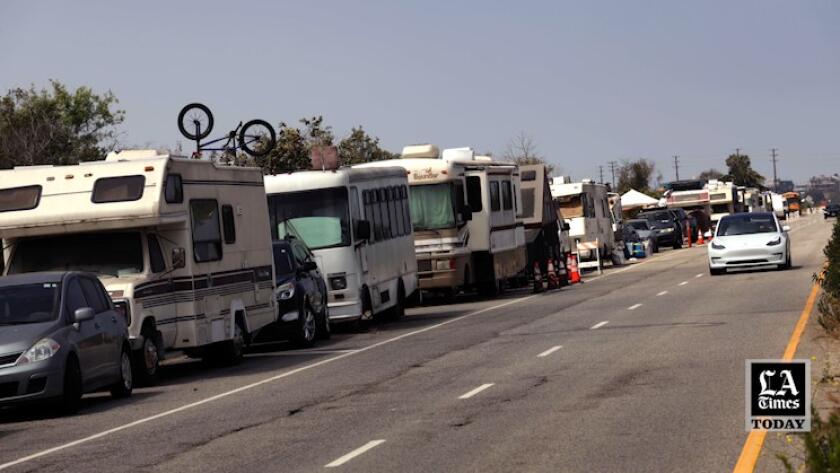


![Los Angeles, CA - May 19: Carlos Vargas, left, and Paulina Rubio, members of the harm reduction team from Homeless Outreach Program Integrated Care Systems [HOPICS], a leading homeless services and housing agency, look for drug addicts to help and pass out supplies at a homeless RV encampment along 77th St. in South Los Angeles Friday, May 19, 2023. The team hands out syringes, fentanyl test strips, overdose reversal nose spray and medication to prevent overdoses, infection and disease transmission, including the HIV virus. Fenanyl is particularly insidious because it can be found in all other drugs, especially meth and heroin. The handouts are also meant to reduce infection through broken pipes, which can cut users mouths and open them to infection. . (Allen J. Schaben / Los Angeles Times)](https://ca-times.brightspotcdn.com/dims4/default/530e2db/2147483647/strip/true/crop/3900x2608+0+34/resize/320x214!/quality/75/?url=https%3A%2F%2Fcalifornia-times-brightspot.s3.amazonaws.com%2Fe9%2F77%2F4b8bd35d4881a3edec6b945b143b%2F1298639-me-soaring-fentanyl-deaths-24-1-ajs.jpg)








